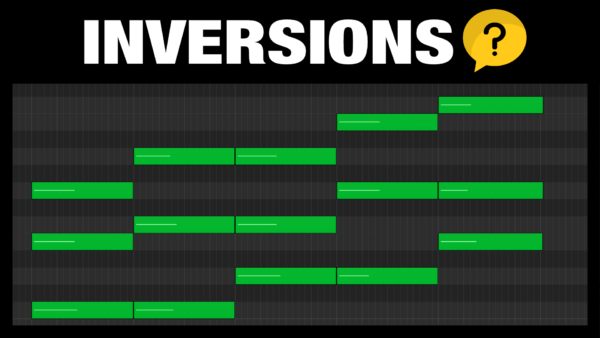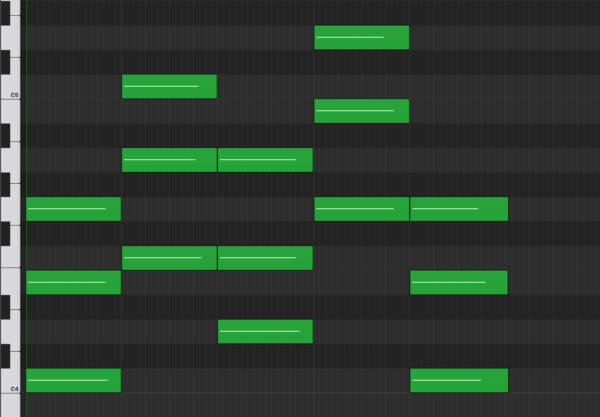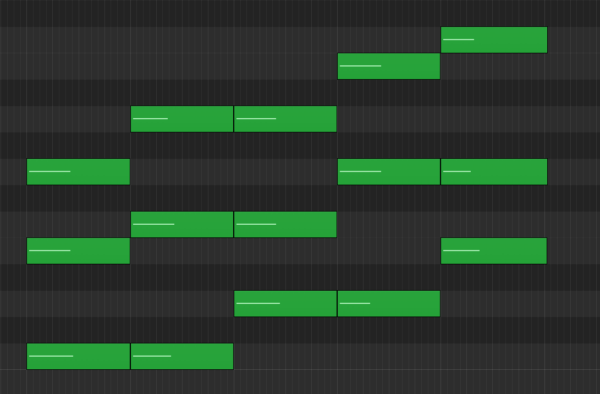 Do you want to learn how to use the power of chord inversions for your chord progressions?
Do you want to learn how to use the power of chord inversions for your chord progressions?
Let’s first learn what chord inversions are, and then how to use them.
Basically a chord inversion is simply re-ordering the voices (notes) of the chord in a different order.
C Major in Root Position

If you play a C Major chord, it has 3 notes: C, E and G. If you play them in that order, it is called “Root Position”.
C Major in First Inversion

If you move the C (root note of the chord) up an octave, you are playing the chord in “First Inversion”.
C Major in Second Inversion

And if you move both the C (root note) and the E (3rd) up an octave so that the fifth is the lowest note of your chord, you are playing what is called the “Second Inversion” of C Major.
The Naming of Chord Inversions
It does not matter where in the range of music (which octave) you play the chord, when naming the inversion of the chord. It is the order of the chord voices that matter. A 3-note chord (triad) has 3 voices: Root, 3rd and 5th. The order of these 3 notes is what decides which inversion the chord is.
- Root – 3rd – 5th = Root Position
- 3rd – 5th – Root = First Inversion
- 5th – Root – 3rd = Second Inversion
What happens if you use a chord with more than 3 notes, such as a 7th chord for example? Well, you will get another option to use as an inversion. Let’s take a C7 Chord as an example: C – E – G – B. Since you have 4 notes now, you can move an extra step when doing your inversion which makes the 7th be the lowest note of the chord.
- Root – 3rd – 5th – 7th = Root Position
- 3rd – 5th – 7th – Root = First Inversion
- 5th – 7th – Root – 3rd = Second Inversion
- 7th – Root – 3rd – 5th = Third Inversion
And if you have 5 notes in your chord (ex: a 9th chord) then you will have a 4th inversion to choose if you wish.
How to use Chord Inversions?
There are basically two reason for choosing to use chord inversions.
1 – Use Chord Inversions for Smooth Chord Progressions
For every chord in your chord progression you will have the notes (also called chord voice) move to another note (in the next chord). Or, if the next chord shares one or more notes of the previous chord, those voices can stay the same. The less the chord voices moves when changing chords, the smoother your chord progression will sound.
This is the main reason for using chord inversions, to make your chord progressions flow more smoothly. This is called “voice leading”. Let me give you an example of a chord progression using chord inversions for smooth voice leading:
Chord Progression: C – F – Dm – G – C
Let’s say you play all these chords in root position (no chord inversions), then you will end up with a very “abrupt” sound of your chord progression. Meaning, no smooth flow.

Chord Progression: C – F – Dm – G – C
Now let’s take the same chord progression, but move chord voices (chord notes) to create chord inversions in a way that makes the chord progression become more smooth, with less and shorter jumps between chords.

2 – Use Chord Inversions for Emphasis on Specific Notes
Sometimes you may also want to choose chord inversions in a way that emphasizes a certain note in your overall theme (melodic context) of your music. What is important to note here is that the highest note in a chord will always be the most clear to the listener, if the balance of volume is the same.
So if you want to accent a specific melodic note in your music, you might want to use a chord inversion with that melodic note as the highest note in your chord.
